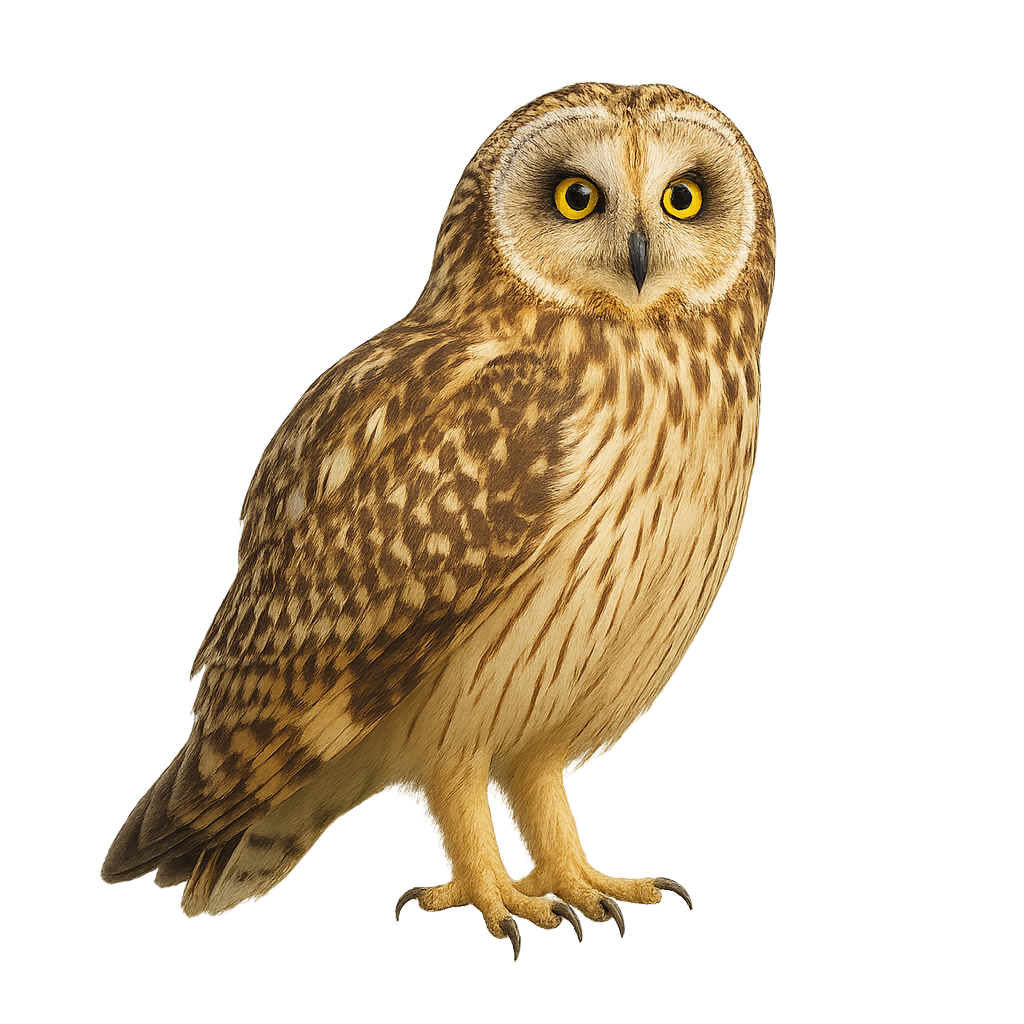Observe and photograph a species in its natural habitat
Learn where and when to observe a species in the wild, how to recognize it in the field, and what habitats it lives in. Get photography tips adapted to its behavior and capture stunning images without disturbing the animal. For full details, open the complete profile in the WildlifePhotographer app.
Short-eared owl
Scientific name: Asio flammeus

IUCN Status: Least Concern
Family: STRIGIDAE
Group: Birds
Shyness: Suspicious
Safe distance: 50 m
Breeding season / Courtship: 01.03-31.03
Gestation: 24 à 28 jours
Births: 25.04-28.05
Habitat:
Wetlands and meadows
Description:
The Short-eared Owl is a small nocturnal raptor, easily recognizable by its pale yellowish plumage and large, piercing yellow eyes. It measures about 34 to 40 cm in length, with a wingspan of 80 to 95 cm, and weighs between 180 and 400 g. Its face is disc-shaped, like that of other owls, and its plumage, which is cream or brown, is speckled with dark spots that provide excellent camouflage in the grasslands and marshes where it resides. The Short-eared Owl primarily inhabits open areas, such as marshes, grasslands, and farmland, across Europe, Asia, and North America. It mainly hunts small mammals, such as voles and mice, as well as birds and insects. This raptor is an excellent nocturnal hunter, using its very sensitive ears and sharp vision to locate prey in the dark. Although the species is not immediately endangered, it is vulnerable to habitat loss, water pollution, and human disturbance.
Recommended lens:
>=300 mm
Photography tips:
Use a telephoto lens to photograph from a distance, respecting the species' discreet nature.
Photograph early in the morning or late in the afternoon, when soft light highlights the marsh owl's plumage.
Look for it in open, grassy areas, such as meadows, marshes, and fields, where it primarily hunts voles and other small mammals.
Be patient and discreet to avoid disturbing its natural behavior. Avoid sudden movements and keep quiet.
Always respect its natural environment and do not disturb its hunting habits, especially during the breeding season.
Ready to take action?
Choose your platform and start your free trial today



